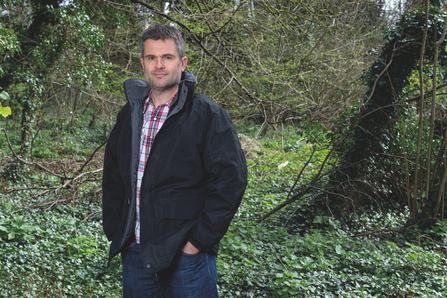
I’ve long seen The Wildlife Trusts as the most powerful movement for nature in UK. Made up of 46 individual Wildlife Trusts, ranging from those covering urban areas, to county Wildlife Trusts, groups of counties, the devolved nations and finally island Trusts — we are embedded into the heart of our communities.
Together, we care for over 2,300 nature reserves ranging from Camley Street Natural Park right by London’s Kings Cross station, to the spectacular Skomer and Skokholm islands off the coast of Pembrokeshire. In total, we directly manage or provide management advice on 332,697 hectares (822,112 acres) of land for nature. We all play our part — but it’s worth mentioning that this collective effort amounts to even more land cared for than by the National Trust!
But what matters to me most is that our federated structure means that the majority of this is close to where people live; over 60 per cent of the UK population live within three miles of a Wildlife Trust nature reserve. And it’s clear that, during the Covid-19 lockdown, millions of people have come to a new realisation of just how important local nature is to them.
I sometimes wonder if, over the last 100 years or so, the nature conservation movement in the UK has focussed a little too much on the identification, categorisation and conservation of rare species and habitats, and not enough on the abundance of nature everywhere, and the preservation and restoration of ecosystem processes.
Don’t get me wrong; we owe a huge debt of gratitude to the conservation pioneers that identified the first nature reserves and protected these sites for future generations. But we all know that nature conservation is no longer enough; we now need to put nature into recovery.
Much as we like to imagine we live in a green and pleasant land, the truth is that the UK is currently one of the most nature depleted countries in the world.
I’m 48 years old and the science is clear; in my lifetime 41 per cent of wildlife species in UK have suffered strong or moderate decreases in abundance. Species that were once common have become rare and with that the role or function they are performing in our ecosystems has also declined.
We’ve all experienced it. As a five year old, if I left my bedroom light on at night with the window open it would be swarming with moths 30 minutes later. Now, I’d be lucky to see one. Similarly, when we went on family holidays and drove up the A1 for five hours, the windscreen would be covered in squashed insects by the time we arrived at our holiday destination. Now, there might be one or two.
At The Wildlife Trusts, we want to see 30 percent of our land and sea being managed for nature’s recovery by 2030. That’s the bare minimum needed to restore nature in abundance to the UK and to start getting our ecosystems working properly again; capturing carbon, pollinating crops, storing water, rejuvenating soils and cleaning our rivers.
We want to work with farmers and other land managers to create a Nature Recovery Network, using field margins, river valleys, hedgerows, roadside verges, railway cuttings and back gardens to protect, connect and restore nature across our countryside, and into our towns and cities.
And we want a comprehensive package of policy measures put in place to help this happen. That includes improvements needed to the Agriculture Bill, the Fisheries Bill and the Environment Bill (all of which are going through parliament in the next few weeks and months) but also better use of planning policy to make sure new developments help nature’s recovery, rather than speed its decline.
Our vision is one where nature is in full, healthy abundance all around us; skies filled with birds, snowstorms of butterflies and moths, armies of invertebrates, vast expanses of wetland and wild landscapes, and seas teeming with life.
And our vision is also one where there’s a positive relationship between humanity and nature, rather than constantly behaving as if we are almost enemies.
This won’t happen overnight, but it could happen over the next decade if all of us, people, politicians and business leaders put our minds to it.
And if it does happen, it will be thanks — in a very large part — to your support as one of The Wildlife Trusts’ 850,000 members.
Craig Bennett
Chief Executive,
The Wildlife Trusts
